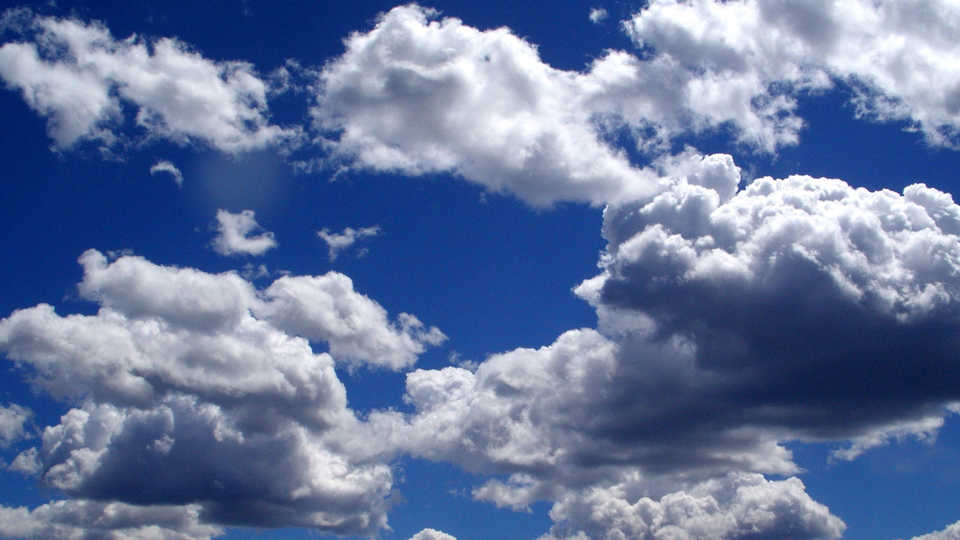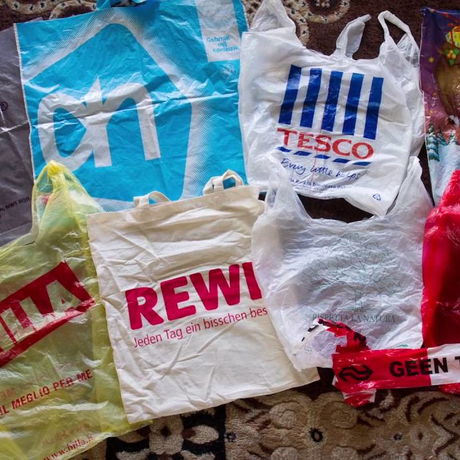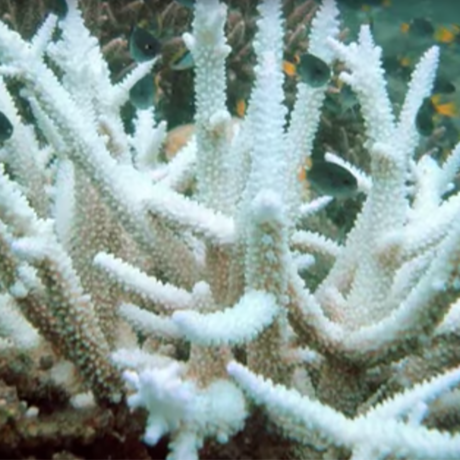Carbon Cycle
Carbon is an extremely common element on earth and can be found in all four major spheres of the planet: biosphere, atmosphere, hydrosphere, and lithosphere. Carbon is part of both the living and non-living parts of the planet, as a component in organisms, atmospheric gases, water, and rocks. The carbon contained in any of the planet’s spheres does not remain there forever. Instead, it moves from one sphere to another in an ongoing process known as the carbon cycle. The carbon cycle is extremely important on earth as it influences crucial life processes such as photosynthesis and respiration, contributes to fossil fuel formation, and impacts the earth’s climate.
Besides the relatively small additions of carbon from meteorites, the amount of carbon on the planet is stable. But, the amount of carbon in any given sphere of the planet can increase or decrease depending on the fluctuations of the carbon cycle. The cycle can be thought of in terms of reservoirs (places where carbon is stored) and flows (the movement between reservoirs). The atmosphere, the biosphere, the hydrosphere, and the lithosphere are the reservoirs and the processes by which carbon moves from one reservoir to another are the flows. Although carbon is extremely common on earth, pure carbon is not common. Rather, carbon is usually bound to other elements in compounds. Thus, when carbon moves or cycles, it is usually doing so within compounds, such as carbon dioxide and methane.
The many processes that move carbon from one place to another happen on different time scales. Some of them happen on short time scales, such as photosynthesis, which moves carbon from the atmosphere into the biosphere as plants extract carbon dioxide from the atmosphere. Some carbon cycle processes happen over much longer time scales. For example, in the ocean, organisms with calcium carbonate skeletons and shells die and some of their remains, those that don’t decompose, sink towards the ocean floor. Upon reaching the ocean floor, the carbon that was stored in their bodies becomes part of the carbon-rich sediment and is eventually carried along, via plate tectonic movement, to subduction zones where it is converted into metamorphic rock. These two examples show the extreme variety of processes that take place in the carbon cycle.
In general, the short-term carbon cycle encompasses photosynthesis and respiration. On land, there is a flow of carbon from the atmosphere to plants with photosynthesis and then a flow back to the atmosphere with plant and animal respiration and decomposition. For aquatic plants, photosynthesis involves taking carbon dioxide dissolved in the water around them and respiration and decomposition put carbon dioxide back into the water. In addition to moving between plants and the atmosphere or the water, carbon dioxide is also constantly moving between the atmosphere and water via diffusion. The long-term carbon cycle encompasses more of the lithospheric processes. It involves the weathering and erosion of carbon-containing rocks, the accumulation of carbon-rich plant and animal material in sediments, and the slow movement of those sediments through the rock cycle.
The entire carbon cycle is composed of even more specific flows between the atmosphere, biosphere, hydrosphere, and lithosphere than those discussed here. Although there are more specific details involved in the earth’s complicated carbon cycle, this version highlights some of the most important components and will teach students the overall concept that carbon is limited and moves through the different spheres of the planet. For more detailed carbon cycle information investigate the resources and references listed at the end of the lesson plan.
Human Alterations
There are natural fluctuations in the carbon cycle, but humans have been changing the carbon flows on earth at an unnatural rate. The major human-induced changes in the carbon cycle result in increased carbon dioxide (CO2) and methane (CH4) in the atmosphere. The largest source of this change is burning fossil fuels, but other actions such as deforestation, cement manufacturing, cattle farming, and rice farming also contribute to this change in the carbon cycle.
Humans use fossil fuels such as oil, coal, and natural gas for a variety of purposes including powering our vehicles, producing electricity, heating and cooling our buildings, and producing goods such as plastics. Fossil fuels are formed over millions of years from buried plant and animal material that undergoes dramatic changes due to temperature and pressures at depth. In general, coal is derived from terrestrial plant material, while oil and natural gas are derived primarily from microscopic marine plants and animals. When we burn these fossil fuels, we take carbon that has been stored underground for a very long time and put it into the atmosphere.
Deforestation causes carbon to be released into the atmosphere for a number of reasons. First, trees that are cut are often burned, which immediately releases the carbon stored in the trees into the atmosphere. Second, deforestation impacts both the temperature and stability of the soil. Since soils contain a significant amount of carbon, changes that affect the soil can affect the carbon stored in the soil. Deforestation results in more soil erosion because trees are no longer there to stabilize the soil. Eroded soil and the carbon it contains often end up in rivers and streams and eventually in the oceans, bringing carbon from the land into the hydrosphere. Soils in deforested areas are not only eroded because of the lack of trees, but they are also often tilled for agriculture. Tillage turns over the soil, releasing carbon dioxide gas contained in the soil to the atmosphere. After deforestation, soil temperatures increase because the soil is no longer covered by foliage. A rise in soil temperature causes the rate of bacterial decomposition to increase, which results in increased carbon release to the atmosphere.
The process of manufacturing cement releases carbon dioxide gas to the atmosphere. To make cement, calcium carbonate is heated in a kiln to produce lime and carbon dioxide. The lime is incorporated with other materials to make the cement, but the carbon dioxide is released to the atmosphere. In the United States, this process releases approximately 7 to 10 million metric tons of carbon per year. Although not one of the very top contributors to carbon dioxide emissions, cement manufacturing is still a significant and growing source of carbon emissions worldwide.
Cattle farming and rice farming both release methane gas to the atmosphere. Flooded rice paddies are considered one of the highest releasers of methane. When rice paddies are flooded, the underwater organic matter undergoes decomposition and methane is released. This also occurs in natural wetlands. Cattle farming also contributes significantly to methane emissions. Cattle belches and flatulence release methane because bacteria in the animals’ guts break down food and convert some of it to methane gas. Both cattle and rice farming are on the rise worldwide and thus these sources of greenhouse gases are becoming more and more of a concern. Methane emissions are also especially concerning because methane is a much stronger greenhouse gas than carbon dioxide, meaning that each molecule of methane warms the earth substantially more than each molecule of carbon dioxide.
Climate Change
Because carbon dioxide (CO2) and methane (CH4) are greenhouse gases that help to control the temperature of the planet, human-induced increases in atmospheric carbon levels are resulting in a host of climatic changes on our planet. These changes include temperature increases, rising sea level, changes in rainfall patterns, increased storms, and organism extinctions. An understanding of the carbon cycle is especially important at this time in human history because of the dramatic and consequential alterations we are making to the cycle.
People are currently taking many different actions, attempting to slow climate change. They are attempting to both lessen the amount of carbon that is emitted to the atmosphere and to take carbon out of the atmosphere and store it elsewhere. Some of the ways to decrease the amount of carbon emitted to the atmosphere include driving less, using energy efficient appliances, switching to solar and wind power, and capturing carbon from power plants and other stationary sources and pumping it underground for storage. This is called carbon capture and storage or carbon sequestration and people have been using this technique in oil fields for a long time. Scientists are currently researching carbon capture and storage methods to try to determine whether this technique can be used on a large scale to help slow climate change. Mitigating climate change by actually taking carbon out of the atmosphere can be accomplished with several different methods. Simply planting more trees takes carbon out of the atmosphere, because plants take carbon from the atmosphere to perform photosynthesis. Other methods for taking carbon dioxide out of the atmosphere include capturing carbon dioxide gas and converting it back into usable fuel. This is an ongoing research topic and although there are currently many viable options for decreasing the amount of carbon in the atmosphere, the future may hold other possibilities as well.



